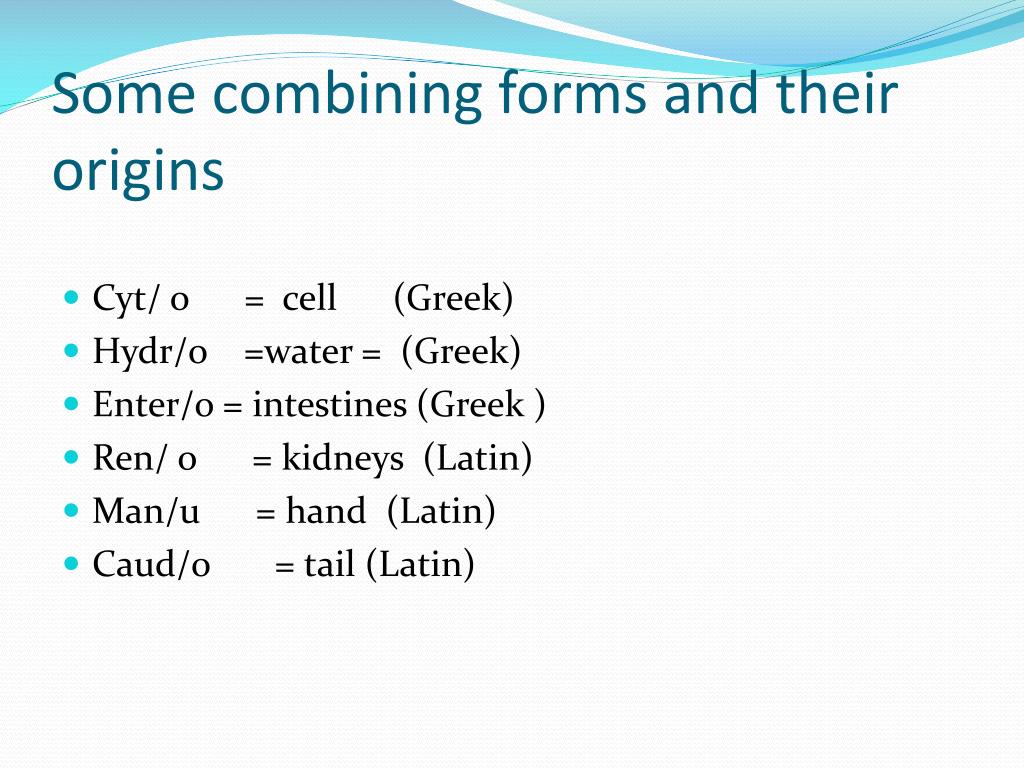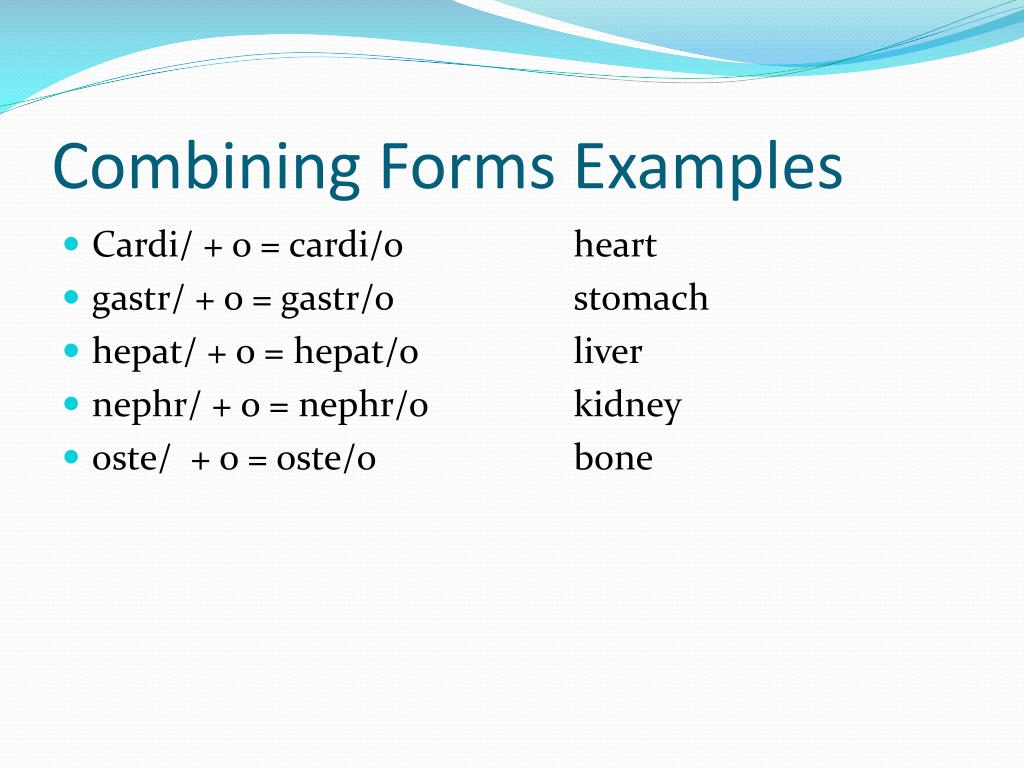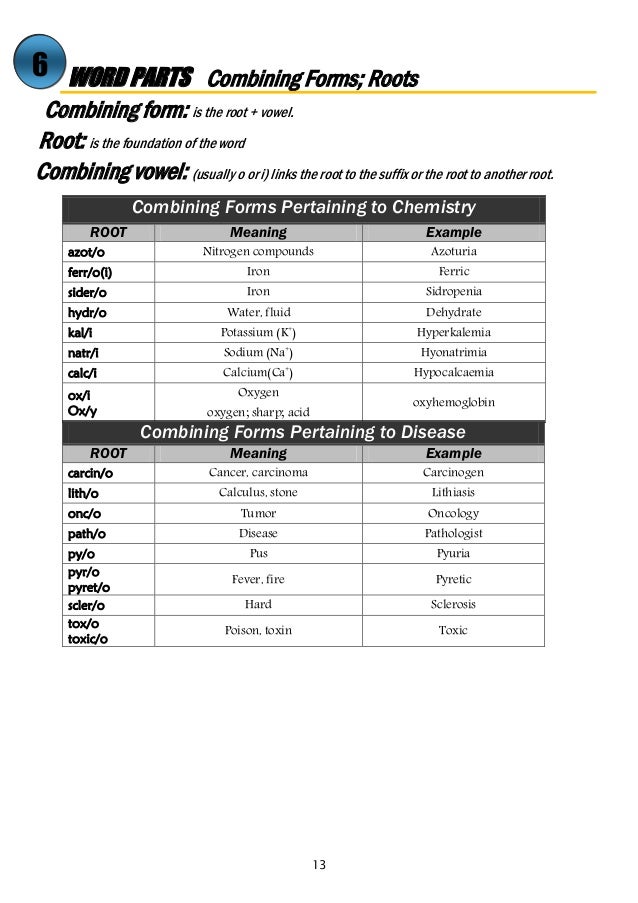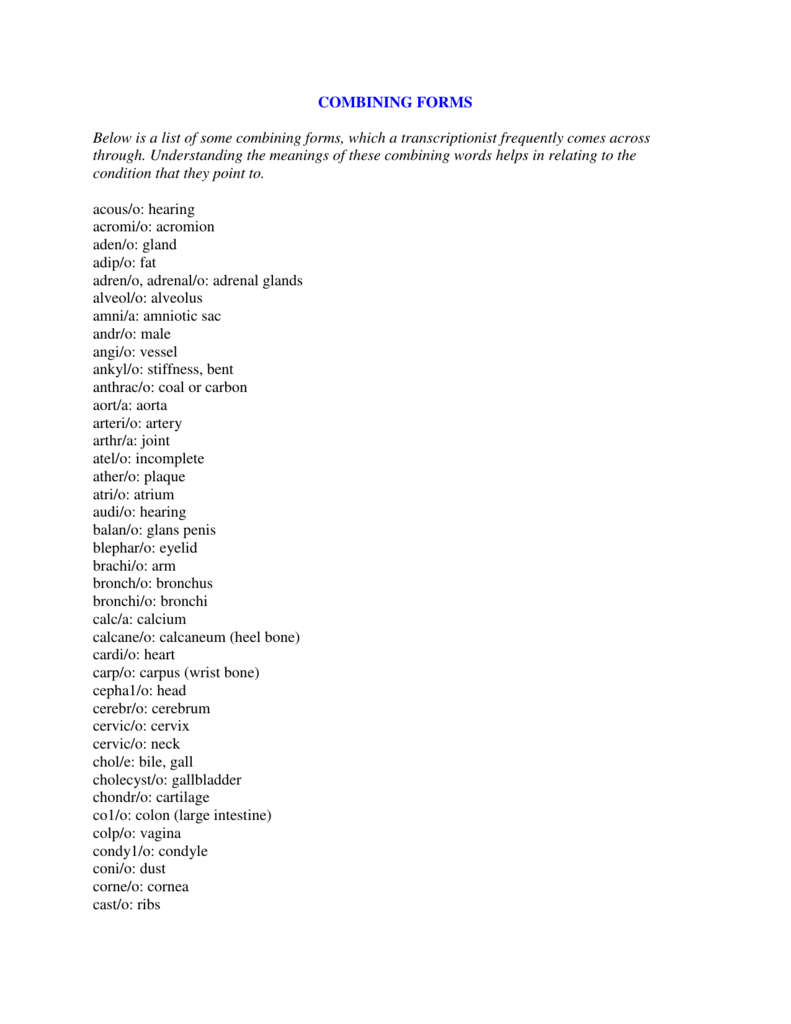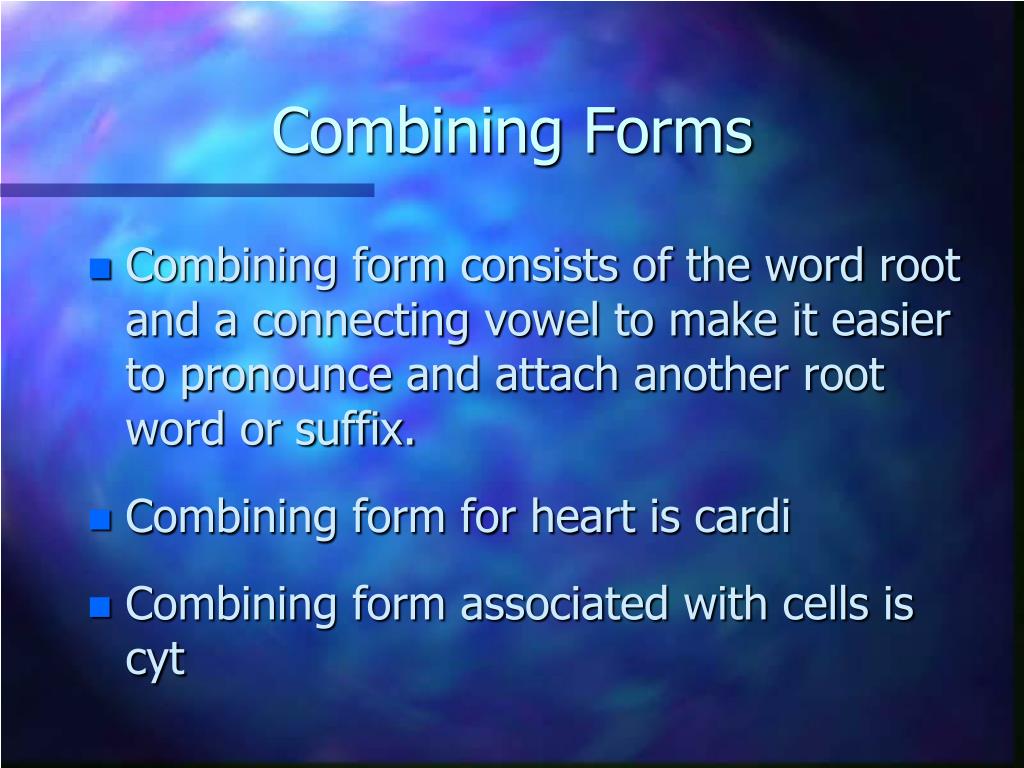Combining Form In Medical Terminology - When a word root is combined with a combining vowel, the word part is referred to as a combining form. The following tables go through some of the most common combining forms, their meaning, and an example of a medical term that uses the. 54 rows this is a list of roots, suffixes, and prefixes used in medical terminology, their meanings, and their etymologies. Nearly all medical terms contain at least one root. The word root contains the. A combining vowel has no meaning but connects roots to suffixes and roots to other roots. The combining form is created when the word root is combined with a. A vowel (usually the letter “o”) may be added to the root to aid in pronunciation. A combining vowel is almost always an o, but in. Most word roots are written with their combining form.
Nearly all medical terms contain at least one root. A combining vowel has no meaning but connects roots to suffixes and roots to other roots. 54 rows this is a list of roots, suffixes, and prefixes used in medical terminology, their meanings, and their etymologies. The following tables go through some of the most common combining forms, their meaning, and an example of a medical term that uses the. The word root contains the. Most word roots are written with their combining form. When a word root is combined with a combining vowel, the word part is referred to as a combining form. A combining vowel is almost always an o, but in. The combining form is created when the word root is combined with a. A vowel (usually the letter “o”) may be added to the root to aid in pronunciation.
A combining vowel has no meaning but connects roots to suffixes and roots to other roots. A combining vowel is used when a root is followed by another word part that begins with a consonant. The word root contains the. The following tables go through some of the most common combining forms, their meaning, and an example of a medical term that uses the. Nearly all medical terms contain at least one root. When a word root is combined with a combining vowel, the word part is referred to as a combining form. 54 rows this is a list of roots, suffixes, and prefixes used in medical terminology, their meanings, and their etymologies. The combining form is created when the word root is combined with a. A combining vowel is almost always an o, but in. A vowel (usually the letter “o”) may be added to the root to aid in pronunciation.
Medical forms
When a word root is combined with a combining vowel, the word part is referred to as a combining form. The word root contains the. A combining vowel is used when a root is followed by another word part that begins with a consonant. Most word roots are written with their combining form. 54 rows this is a list of.
Combining Form
A combining vowel is used when a root is followed by another word part that begins with a consonant. The word root contains the. 54 rows this is a list of roots, suffixes, and prefixes used in medical terminology, their meanings, and their etymologies. The combining form is created when the word root is combined with a. A vowel (usually.
Medical forms
54 rows this is a list of roots, suffixes, and prefixes used in medical terminology, their meanings, and their etymologies. The following tables go through some of the most common combining forms, their meaning, and an example of a medical term that uses the. Nearly all medical terms contain at least one root. A combining vowel is used when a.
PPT Medical Terminology PowerPoint Presentation, free download ID
54 rows this is a list of roots, suffixes, and prefixes used in medical terminology, their meanings, and their etymologies. Nearly all medical terms contain at least one root. The combining form is created when the word root is combined with a. A vowel (usually the letter “o”) may be added to the root to aid in pronunciation. When a.
Medical Terminology Chapter 2 Combining Forms PDF
Nearly all medical terms contain at least one root. A combining vowel is used when a root is followed by another word part that begins with a consonant. A combining vowel is almost always an o, but in. A vowel (usually the letter “o”) may be added to the root to aid in pronunciation. The word root contains the.
Medical Terminology Part 1; Prefixes, Suffixes, Combining Forms
A combining vowel is almost always an o, but in. Most word roots are written with their combining form. A combining vowel is used when a root is followed by another word part that begins with a consonant. 54 rows this is a list of roots, suffixes, and prefixes used in medical terminology, their meanings, and their etymologies. A combining.
Combining forms Medical Transcription
Nearly all medical terms contain at least one root. The combining form is created when the word root is combined with a. Most word roots are written with their combining form. A combining vowel is used when a root is followed by another word part that begins with a consonant. A vowel (usually the letter “o”) may be added to.
PPT MEDICAL TERMINOLOGY PowerPoint Presentation, free download ID
A combining vowel has no meaning but connects roots to suffixes and roots to other roots. Nearly all medical terms contain at least one root. The combining form is created when the word root is combined with a. A vowel (usually the letter “o”) may be added to the root to aid in pronunciation. A combining vowel is almost always.
SOLUTION Medical terminology combining forms suffixes prefixes
Most word roots are written with their combining form. Nearly all medical terms contain at least one root. The combining form is created when the word root is combined with a. A vowel (usually the letter “o”) may be added to the root to aid in pronunciation. A combining vowel is almost always an o, but in.
Medical Terminology Diagram Quizlet
The word root contains the. When a word root is combined with a combining vowel, the word part is referred to as a combining form. The combining form is created when the word root is combined with a. Nearly all medical terms contain at least one root. Most word roots are written with their combining form.
A Combining Vowel Is Almost Always An O, But In.
A vowel (usually the letter “o”) may be added to the root to aid in pronunciation. The following tables go through some of the most common combining forms, their meaning, and an example of a medical term that uses the. The word root contains the. Nearly all medical terms contain at least one root.
54 Rows This Is A List Of Roots, Suffixes, And Prefixes Used In Medical Terminology, Their Meanings, And Their Etymologies.
A combining vowel has no meaning but connects roots to suffixes and roots to other roots. A combining vowel is used when a root is followed by another word part that begins with a consonant. The combining form is created when the word root is combined with a. When a word root is combined with a combining vowel, the word part is referred to as a combining form.

